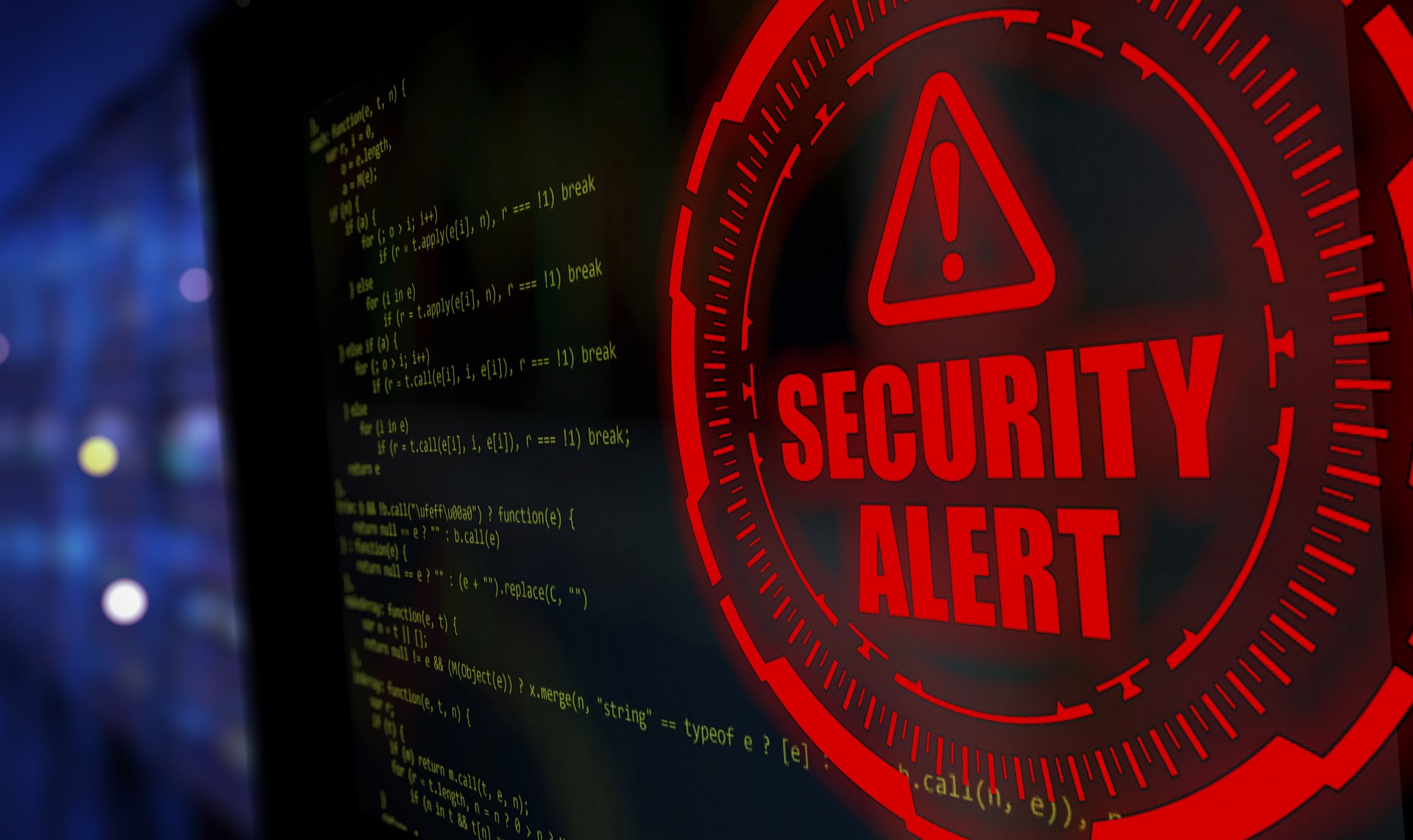As businesses increasingly rely on digital platforms to store and transmit sensitive information, the need for robust cybersecurity measures has never been more critical. Among the various threats that organizations face, the Man-in-the-Middle (MITM) attack stands out as a particularly dangerous and stealthy adversary. In this comprehensive article, we will shed light on the intricacies of MITM attacks, uncovering their modus operandi and the potential consequences they can have on businesses. Armed with this knowledge, business owners and managers can take proactive steps to safeguard their data and maintain the trust of their customers.
What is MITM Attack?
A Man-in-the-Middle (MITM) attack is a type of cyber attack where an attacker intercepts and manipulates communication between two parties without their knowledge. In this attack, the attacker positions themselves between the sender and receiver, allowing them to eavesdrop on the communication, steal sensitive information, or even modify the data being transmitted. By exploiting vulnerabilities in the communication channel, such as unsecured Wi-Fi networks or compromised routers, the attacker can gain unauthorized access to confidential data, posing a significant threat to businesses and individuals alike. Understanding the workings of a MITM attack is crucial for businesses to implement effective security measures and protect their data from falling into the wrong hands.
How Does an MITM Attack Work?
Interception
In the first step of a Man-in-the-Middle attack, the attacker positions themselves between the sender and the intended recipient. Gaining access to the communication channel or exploiting flaws in the network infrastructure can accomplish this.
Monitoring
Once the attacker has successfully intercepted the communication, they begin monitoring the data being transmitted. This can include emails, login credentials, financial information, or any other sensitive data exchanged between the two parties.
Decryption
If the communication is encrypted, the attacker will attempt to decrypt the data to gain access to its contents. This can be done by using various techniques, such as obtaining encryption keys or leveraging weaknesses in the encryption algorithm.
Modification
In some cases, the attacker may choose to modify the data being transmitted. This can involve altering the content of messages, injecting malicious code or malware, or redirecting the communication to a different destination.
Impersonation
Another common tactic in MITM attacks is impersonating one or both parties involved in the communication. By doing so, the attacker can gain the trust of the recipient and manipulate the conversation to their advantage.
Relaying
In certain scenarios, the attacker may act as a relay between the sender and recipient, forwarding the communication while still monitoring and potentially modifying the data being transmitted.
Covering Tracks
To avoid detection, the attacker takes steps to cover their tracks and ensure that their presence remains undetected. This can involve deleting logs, manipulating timestamps, or using other techniques to hide their activities.
What are the Most Common Techniques Used in MITM Attacks?
- ARP Spoofing: Address Resolution Protocol (ARP) spoofing is a common technique used in MITM attacks. The attacker sends fake ARP messages to the network, tricking the devices into associating the attacker’s MAC address with the IP address of the intended recipient. This allows the attacker to intercept and manipulate the communication.
- DNS Spoofing: Domain Name System (DNS) spoofing involves manipulating the DNS responses to redirect the victim’s traffic to a malicious server controlled by the attacker. By spoofing the DNS responses, the attacker can redirect the victim to fake websites or intercept their communication.
- Wi-Fi Eavesdropping: Attackers can exploit unsecured Wi-Fi networks to intercept and monitor the communication between devices. By setting up a rogue access point or using packet sniffing tools, they can capture sensitive information transmitted over the network.
- Session Hijacking: In session hijacking, the attacker steals the session cookies or tokens used for authentication, allowing them to impersonate the victim and gain unauthorized access to their accounts. This can be done through techniques like session sidejacking or session replay attacks.
- SSL Stripping: Secure Sockets Layer (SSL) stripping is a technique where the attacker downgrades the secure HTTPS connection to an unencrypted HTTP connection. This allows them to intercept and manipulate the data transmitted between the victim and the server without raising any alarms.
- Malware Injection: Attackers may inject malware into the victim’s device or network, allowing them to gain control and monitor the communication. This can be done through techniques like malicious email attachments, infected downloads, or compromised websites.
- Man-in-the-Browser (MITB): In a MITB attack, the attacker compromises the victim’s web browser, allowing them to modify the content displayed to the user. This enables them to manipulate communication, steal sensitive information, or perform unauthorized transactions.
Can MITM Attacks be Detected?
Detecting Man-in-the-Middle (MITM) attacks can be challenging, but several indicators can help identify their presence. Unusual network behavior, such as unexpected changes in network traffic patterns or an increase in latency, can be signs of an MITM attack. Additionally, SSL certificate errors or warnings, unexpected pop-ups or redirects, and discrepancies in website content can indicate the presence of an attacker intercepting and manipulating communication. Implementing network monitoring tools, using secure protocols like HTTPS, regularly checking SSL certificates, and educating users about safe browsing practices can all contribute to the detection and prevention of MITM attacks.
What is the Most Famous MITM Attack?
One of the most famous and impactful Man-in-the-Middle (MITM) attacks is known as the “Superfish” attack. In 2015, it was discovered that Lenovo, a major computer manufacturer, pre-installed adware called Superfish on their laptops. This adware used a self-signed root certificate to intercept and modify encrypted HTTPS connections, allowing the injection of unwanted advertisements into web pages. However, this certificate was easily exploitable by attackers, enabling them to intercept sensitive user data, including passwords and financial information. The Superfish attack highlighted the significant risks posed by MITM attacks and emphasized the importance of secure communication channels and trustworthy software practices.
Does a VPN prevent MITM attacks?
Yes, a VPN (Virtual Private Network) can help prevent Man-in-the-Middle (MITM) attacks. When you connect to a VPN, your internet traffic is encrypted and routed through a secure tunnel to the VPN server. This encryption ensures that even if an attacker intercepts your communication, they won’t be able to decipher the encrypted data. Additionally, VPNs use authentication mechanisms to verify the identity of the VPN server, making it difficult for attackers to impersonate the server and perform MITM attacks. However, it is important to choose a reputable and trustworthy VPN provider that implements strong encryption protocols and follows best security practices to ensure the effectiveness of the VPN in preventing MITM attacks.
How to Prevent MITM Attacks
Implement Strong Encryption
Use secure communication protocols like HTTPS for websites and SSL/TLS for email and other sensitive data transmissions. Encryption ensures that data is encrypted during transit, making it difficult for attackers to intercept and decipher.
Beware of Unsecured Networks
Avoid connecting to unsecured Wi-Fi networks, especially in public places. If you must use public Wi-Fi, use a VPN to encrypt your internet traffic and protect against potential MITM attacks.
Keep Software and Devices Updated
Regularly update your operating system, applications, and firmware to ensure you have the latest security patches. This helps protect against known vulnerabilities that attackers may exploit in MITM attacks.
Verify SSL Certificates
Always check for valid SSL certificates when accessing websites. Make sure the certificate is from a reputable certificate authority by looking for the padlock icon. Be cautious if you encounter SSL certificate errors or warnings.
Educate Users
Train employees and users about the risks of MITM attacks and the importance of secure browsing habits. Teach them to be cautious when accessing sensitive information, avoid clicking on suspicious links, and verify the authenticity of websites and email senders.
Use Two-Factor Authentication (2FA)
Enable two-factor authentication whenever possible. This adds an extra layer of security by requiring a second form of verification, such as a unique code sent to your mobile device, in addition to a password.
Employ Network Monitoring
Implement network monitoring tools to detect any unusual network behavior or traffic patterns that may indicate an MITM attack. Regularly review logs and monitor for any signs of unauthorized access or tampering.
Secure Physical Access
Protect physical access to your network infrastructure, routers, and servers. Limit access to authorized personnel and ensure that physical devices are properly secured to prevent tampering.
Conclusion
In conclusion, Man-in-the-Middle (MITM) attacks pose a significant threat to businesses, particularly those operating in sectors where data security is critical. Understanding the nature of MITM attacks, their common techniques, and the potential consequences is crucial for business owners and managers to protect their company’s data and customer information. By implementing strong encryption, being cautious of unsecured networks, keeping software updated, verifying SSL certificates, educating users, using two-factor authentication, employing network monitoring, and securing physical access, businesses can take proactive steps to prevent MITM attacks and safeguard their valuable data. Stay vigilant, stay informed, and stay one step ahead of cyber threats to ensure the integrity and security of your organization’s digital assets.
Final Thoughts
Take your business’s security to the next level with Buzz Cybersecurity as your trusted partner. Our tailored defense solutions are unmatched in the industry, providing a comprehensive suite of services ranging from managed IT to cutting-edge cloud solutions and advanced ransomware protection. With our team of experienced professionals, your organization can confidently navigate the intricate world of cyber threats, knowing that your invaluable digital assets are shielded from harm. Join forces with us and empower your business to thrive in the face of relentless cyber risks.
Sources
- https://info.cybertecsecurity.com/how-do-hackers-enter-your-system-exploiting-vulnerabilities-in-2023
- https://www.vmware.com/topics/glossary/content/network-traffic-analysis.html
- https://en.wikipedia.org/wiki/Superfish
- https://superuser.com/questions/1045280/does-a-vpn-encrypt-traffic-between-the-vpn-server-and-the-internet
Image by Gerd Altmann from Pixabay









